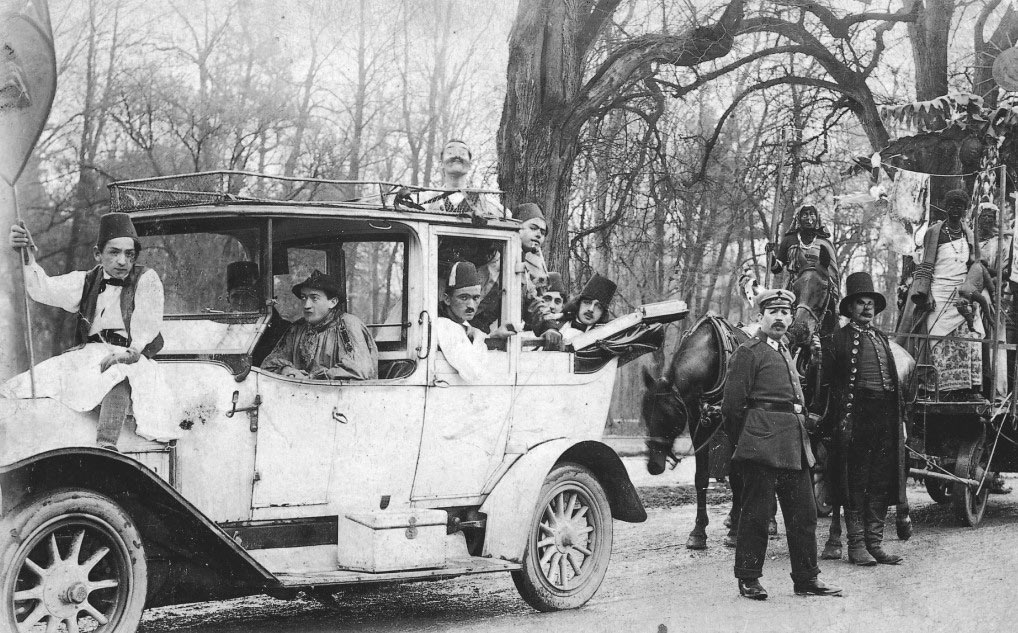Ossip WEINBERG
January 4, 2019Léon ZACK
January 4, 2019Joachim WEINGART (born Joachim Weingarten)
DROHOBYCZ (GALICIA) 1895 – DEPORTED TO AUSCHWITZ 1942
Joachim Weingart’s father, who was a wine merchant, died young, leaving his wife alone with two children. Joachim Weingart left his hometown in 1912 to take drawing classes in Weimar. He exhibited his work for the first time in Lwow (Lemberg) in 1912 at the School of Arts and Crafts, and in Vienna in 1914, where he studied at the School of Fine Arts. The industrialist and patron Carol Katz discovered Weingart’s talent and decided to support him, as he also supported Alfred Aberdam and David Seifert. In 1916, Weingart visited Berlin for the first time.
Following World War I, he returned to Galicia and exhibited his art in Lodz. He went back to Berlin in 1922, where he met Menkes and Alfred Aberdam at the studio of the sculptor Alexander Archipenko. In September 1923, a solo exhibition of his work took place at the head office of the Society of Friends of the Fine Art Academy in Lwow (Lemberg). In 1923, according to a letter by Menkes, Weingart joined him in Paris, where they shared a room for two years at the Hôtel Médical. He became friends with Léon Weissberg and Aberdam, who he had already met in Berlin. In 1925, the four of them exhibited their work at Jan Sliwinski’s gallery Au Sacre du Printemps, at 5 rue du Cherche-Midi. The Galician friends made up the Group of Four.
In 1925, Weingart settled in a studio in Montparnasse. He fell in love with a young French girl, the daughter of a doctor, who he married despite her parents’ opposition. The dealer René Gimpel took an interest in his painting. Weingart enjoyed a period of success before sinking into depression after his wife and son left him. In 1930, Gimpel signed a contract with him. In November 1934, Weingart started to draw charcoal sketches for the portrait of Mrs Gimpel. His health got worse. He was lonely and tragic and shut himself from the world. He painted continuously in his studio, where he was arrested on March 30, 1942, before being interned in Pithiviers. On July 17, 1942, he was deported on convoy number 6. He was murdered in Auschwitz. His brother committed suicide the same year.
Stories of Jewish Artists of the School of Paris 1905-1939
FRENCH-ENGLISH
Capitale des arts, le Paris des années 1905-1939 attire les artistes du monde entier. De cette période de foisonnement, un terme est resté, celui d'Ecole de Paris, qui recouvre une grande diversité d'expression artistique. Dans ce brassage dont Montparnasse est le creuset, un groupe se distingue : celui des artistes juifs venus de Russie, de Pologne et d'Europe centrale. Si leurs styles sont variés, un destin commun les rassemble : ils fuient l'antisémitisme de leur pays d'origine. Certains ont connu la célébrité dès les années 1920, tels Soutine, Lipchitz ou Chagall. D'autres n'ont pas eu le temps ou la chance d'y accéder. Près de la moitié a péri dans les camps de concentration nazis.
From 1905 to 1939, Paris attracted artists from all over the globe as the capital of the art world. This period of artistic proliferation became known as the School of Paris, and includes a great diversity of artistic expression. Within the teeming art world centred on Montparnasse, one group set itself apart: Jewish artists from Russia, Poland, and Central Europe. Although their styles were diverse, they shared the common fate of fleeing anti-Semitic persecutions in their home countries. Some became famous in the 1920s, such as Soutine, Lipchitz, and Chagall, while others did not have the time or the luck to gain renown. Nearly half of these artists died in Nazi concentration camps.





